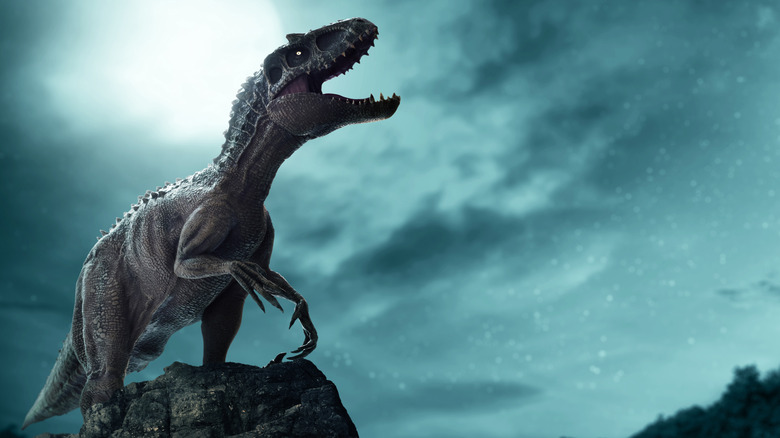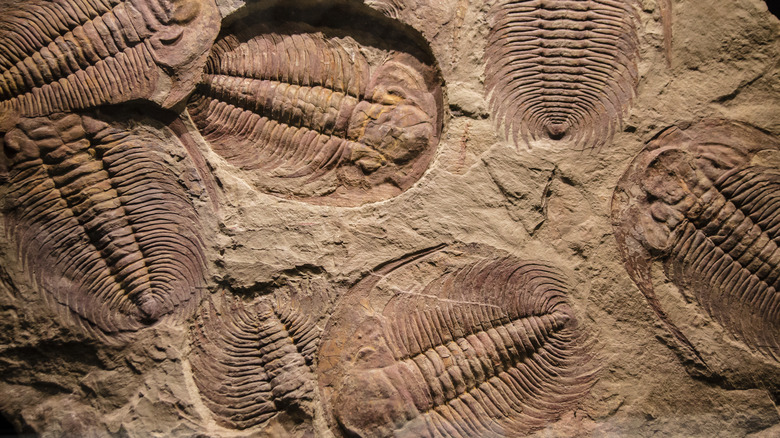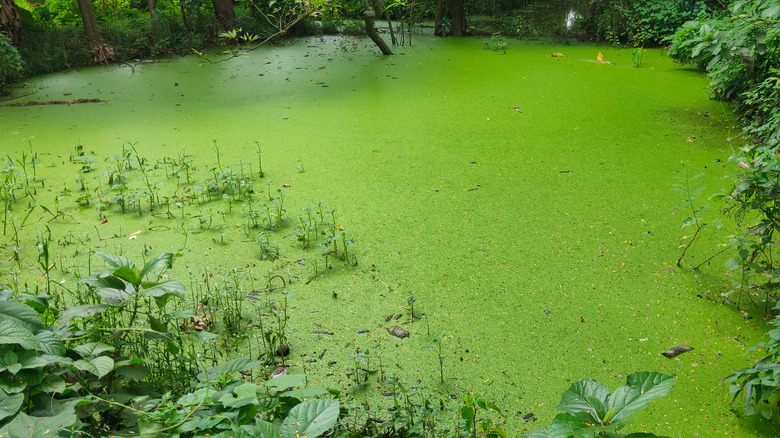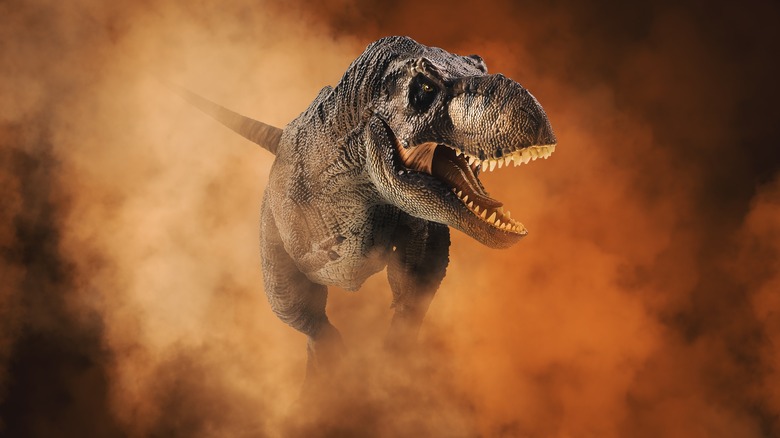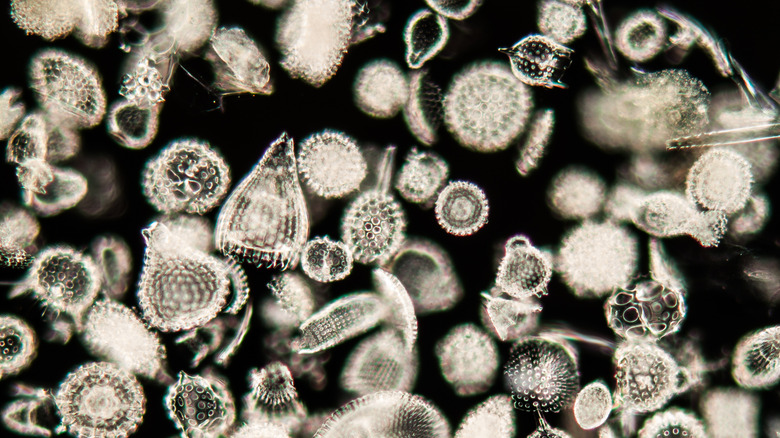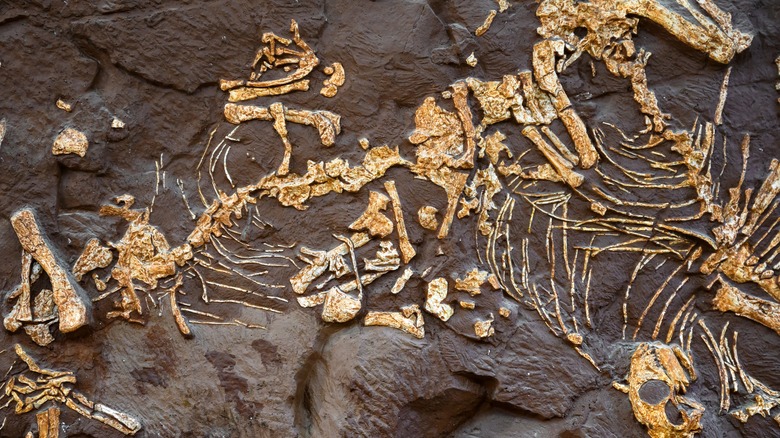Why Earth Took So Long To Recover After Mass Extinction
Vast lands covered by lush forests booming with biodiversity, surrounded by monster-filled seas, in a time ruled by giants who stomped, flew, and swam across the planet — this might be the visual that comes to mind when imagining the prehistoric. For those of us who are far from scientists, scenes from Hollywood blockbusters likely shaped this picture. Because of this, it's fair to say that most of us don't have a firm grasp on what reality really looked like back then. For instance, the main characters in Universal Pictures' "The Land Before Time" lived millions of years apart — Spike the Stegosaurus and Littlefoot the Apatosaurus would have lived in the Late Jurassic Period, while pretty much every other member of the group would have lived in the Late Cretaceous (via Insider).
Other movies have taken a decent crack at portraying what other periods may have looked like, such as Studio Ghibli and Disney's "Ponyo," with its animated rendition of the Cambrian Period — which hosted the largest historical burst of evolutionary diversity (via National Geographic). And while Steven Spielberg's "Jurassic Park" certainly taught people a lot about the different species of dinosaurs, sparking a decades-long societal infatuation with them, you can probably see why that movie is not very realistic either. But us simple folk aren't the only ones left in the dark about some mysteries that have been buried in years of history (and dirt). There are some things even the scientists didn't know ... until now.
The Great Dying
Over 250 million years ago, our planet faced one of its greatest mass extinctions, known to history as the Permian extinction, or the "Great Dying" (via Live Science). More than 90% of the species on our planet were lost, including plants, large land animals, and even microorganisms that helped balance fragile ecosystems. Less than 5 percent of all animal species in the seas and less than one-third of large land species survived, and the forests ... well, they were entirely barren (via National Geographic). The greatest testimony to this post-apocalyptic, barren time can be found in the mineral composition of the Italian Alps. While lower layers of the rock, dating prior to the extinction, contained pollen samples typical of healthy plant life, layers during the extinction fossilized mostly fungi — indicative of the smorgasbord of dead trees left to feast on.
The extinction happened sometime toward the end of the Permian Period (which took place around 298 to 251 million years ago) and the start of the Triassic Period (which took place around 251 to 201 million years ago). During this time, Earth was mapped by Pangaea and lined with super volcanoes called the Siberian Traps, known for outputting a harmful amount of greenhouse gas into the ozone. Although these gaseous brutes were one of the suspects accused in the crime of mass extinction, there were, in fact, several factors that led to it.
Unlivable Conditions
The Siberian Traps (via Live Science) released so much volcanic greenhouse gas into the atmosphere that it produced acid rain (via National Geographic). Sulfate molecules in the gas would have also blocked the sun, thus killing off marine life and decreasing biodiversity. The mass decaying of creatures also produced methane, and combined with carbon dioxide (CO2) from the Siberian Traps' eruptions, the ocean's waters became anoxic, with greenhouse conditions so extreme that they were not seen for millions of years before life took over the planet.
Although disastrous, this was just one of Earth's many mass extinctions. Over 65 million years ago, between the Cretaceous and Tertiary periods, the most famous mass extinction took place, taking out many of the world's dinosaurs that we know today. The difference between the Great Dying and this extinction, however, is that the latter mystery has primarily been solved. Based on rocks found from that age containing traces of asteroids, most scientists believe that widespread wildfires and climate change — caused by asteroids — killed the dinosaurs. As for the Permian extinction, there were still many questions left unanswered — until recently.
Slow and steady ... loses everyone's attention
We mentioned earlier in this story how movie portrayals have blurred the lines of prehistoric reality for the average Joe, and Hollywood has also made other mass extinctions more famous than the Great Dying (via Live Science). Maybe because it was cute creatures — like the dinosaurs and lemurs in Disney's "Dinosaur" — being taken out by asteroids (via National Geographic) rather than microorganisms and plant life being taken out by gas and stinky stagnant water.
The Great Dying also wasn't very epic. The number of species lost may have been, but the scene was fairly depressing and barren. Picture a post-apocalyptic wasteland with no life or movement versus an action-packed scene where asteroids are crashing down from the heavens and creatures are running from their impending doom. Now you can probably see why the Great Dying receives little attention, but there was one unique thing about it: the time that it took for the Earth's population to heal, which was about 10 million years. And this was solely because of the lives lost, perpetually creating more and more of the gasses that started the mass extinction in the first place — making for a truly hopeless era.
What's Reverse Weathering?
One species lost to the Permian extinction were a group of microorganisms called radiolarians (via Live Science). And while the loss of their presence may have not been as visibly noticeable as a Tyrannosaurus rex's, the aftershock to the ocean was drastic. But before we get into that, we have to explain the difference between processes called "chemical weathering" and "reverse weathering."
When rocks on land break down, they release calcium into the ocean, which erodes over time and combines with CO2 to create carbonate rocks. This process of chemical weathering happens faster when the temperature is warmer, allowing for more CO2 to be released and trapped in rocks — this helps cool down the water temperature. When it gets cooler, the process slows — the CO2 is saved in the rocks to be released slowly over time and regulate the temperature from getting too cold. Reverse weathering, on the other hand, occurs when there is too much silica in the water, forming a clay that releases more CO2 than can be saved in the carbonate ocean floor rocks (seen in the chemical weathering process). And that increase in silica? That can be blamed on the little radiolarians, because when they died, they stopped doing their jobs.
Death to Radiolarians ... meant death for all
It is believed the radiolarians died at the very start of the Permian extinction, as rocks containing silica-rich fragments from their shells cannot be found from this time (via Live Science). Our modern oceans do not have a lot of silica today because planktonic creatures use it to produce their shells — and radiolarians did the same. The loss of this species caused an abundance of silica, resulting in high reverse weathering rates as an aftershock (via Nature). The burst of reverse weathering resulted in long-term atmospheric greenhouse conditions, stagnating the ocean with CO2 and methane, which caused a hot climate and anoxic, acidic waters inhospitable to life. It also resulted in a vicious cycle that delayed the planet's healing — and the return of life to it — by almost 10 million years.
Sure, this story might not be as fun as watching Little Foot hang out with Ducky (who would be millions of years younger than him, per Insider) or as exciting as an action-packed scene featuring expensive Hollywood pyrotechnics and booming audio of dinosaurs roaring. But the Great Dying, otherwise known as the Permian extinction, was devastating, and scientists are finally getting a grasp on how devastating it truly was — and the factors that caused it.
